



Item |
Resident |
Nonresident |
365-day hunting license |
$40 |
$120 |
365-day hunting license (youth 14 to 17) |
$16 |
$34 |
365-day hunting license (youth 13 under) |
$11 |
$34 |
365-day hunt/fish combination license |
$44 |
$150 |
365-day hunt/fish combination license (youth 14 to 17) |
$20 |
$38 |
App fee per species |
$10 |
$16 |
General season deer |
$46 |
$418 |
Dedicated hunter deer (adult) |
$215 |
$1,067 |
Dedicated hunter deer (youth) |
$120 |
$834 |
Limited entry deer |
$94 |
$670 |
Multi-season limited entry deer |
$170 |
$1,130 |
Premium limited entry deer |
$185 |
$798 |
Multi-season premium limited entry deer |
$336 |
$1,330 |
Management and cactus limited entry deer |
$94 |
$670 |
Item | Resident | Nonresident |
365-day hunting license | $40 | $120 |
365-day hunting license (youth 14 to 17) | $16 | $34 |
365-day hunting license (youth 13 under) | $11 | $34 |
365-day hunt/fish combination license | $44 | $150 |
365-day hunt/fish combination license (youth 14 to 17) | $20 | $38 |
App fee per species | $10 | $16 |
General season deer | $46 | $418 |
Dedicated hunter deer (adult) | $215 | $1,067 |
Dedicated hunter deer (youth) | $120 | $834 |
Limited entry deer | $94 | $670 |
Multi-season limited entry deer | $170 | $1,130 |
Premium limited entry deer | $185 | $798 |
Multi-season premium limited entry deer | $336 | $1,330 |
Management and cactus limited entry deer | $94 | $670 |
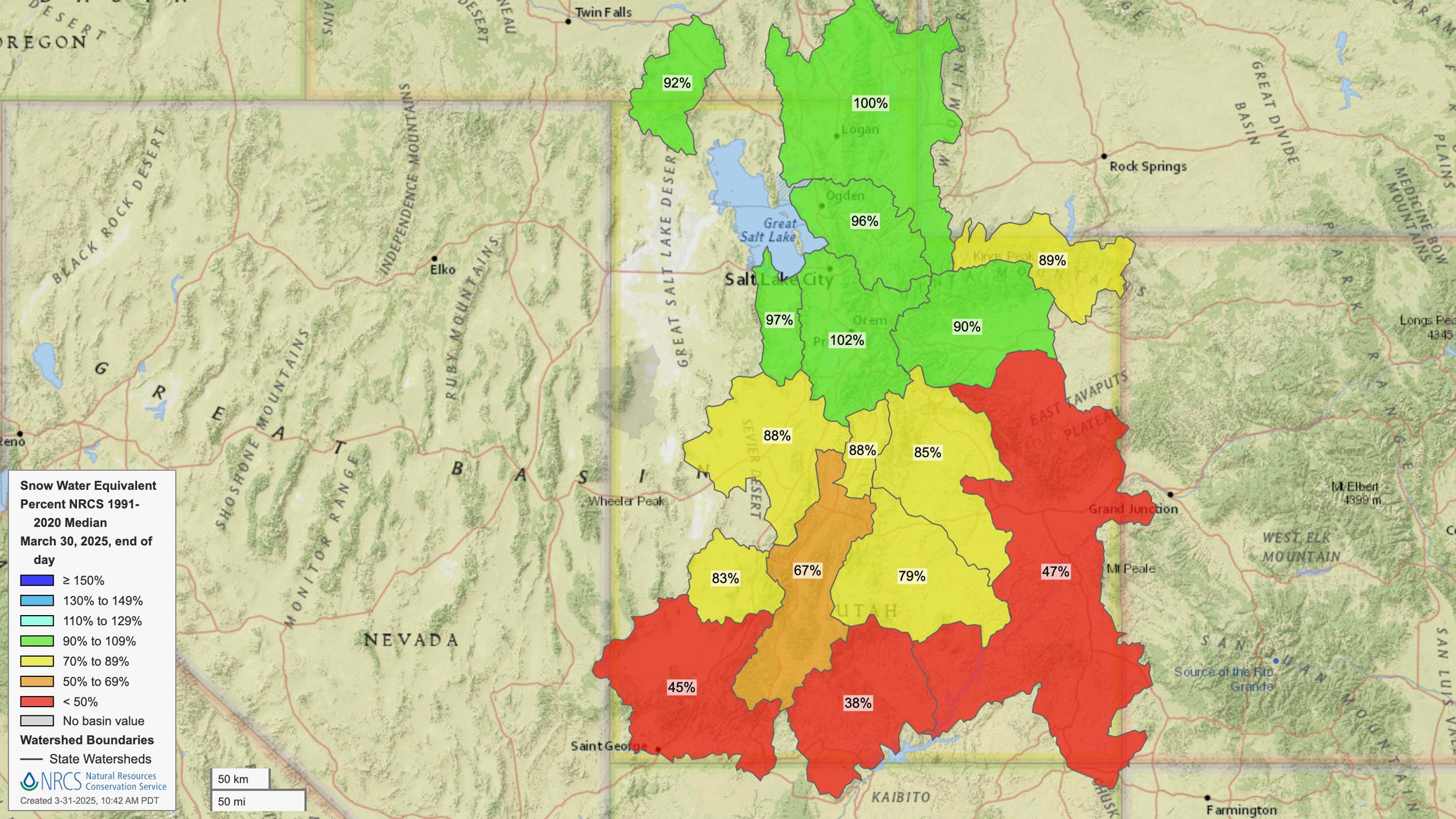
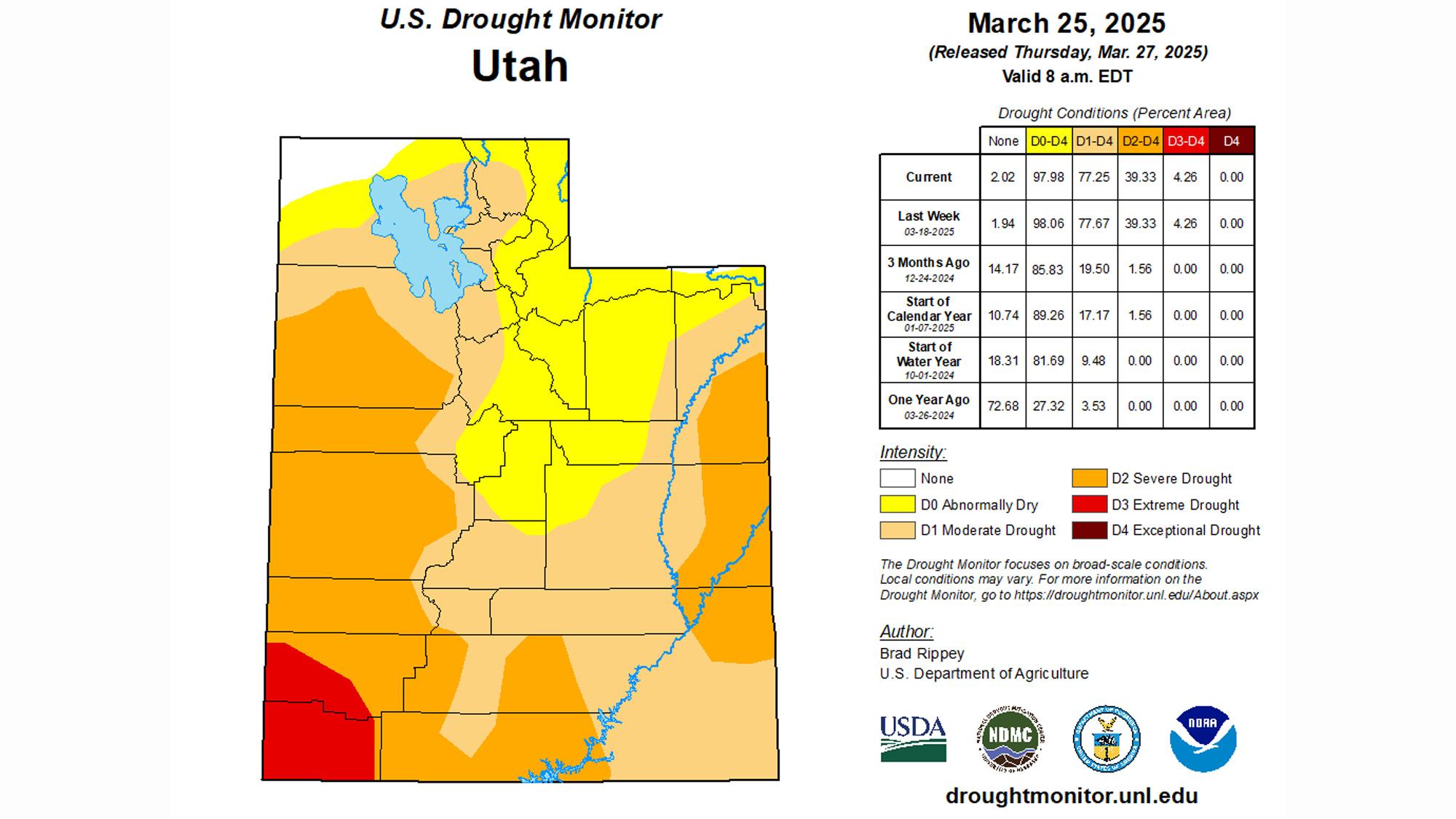
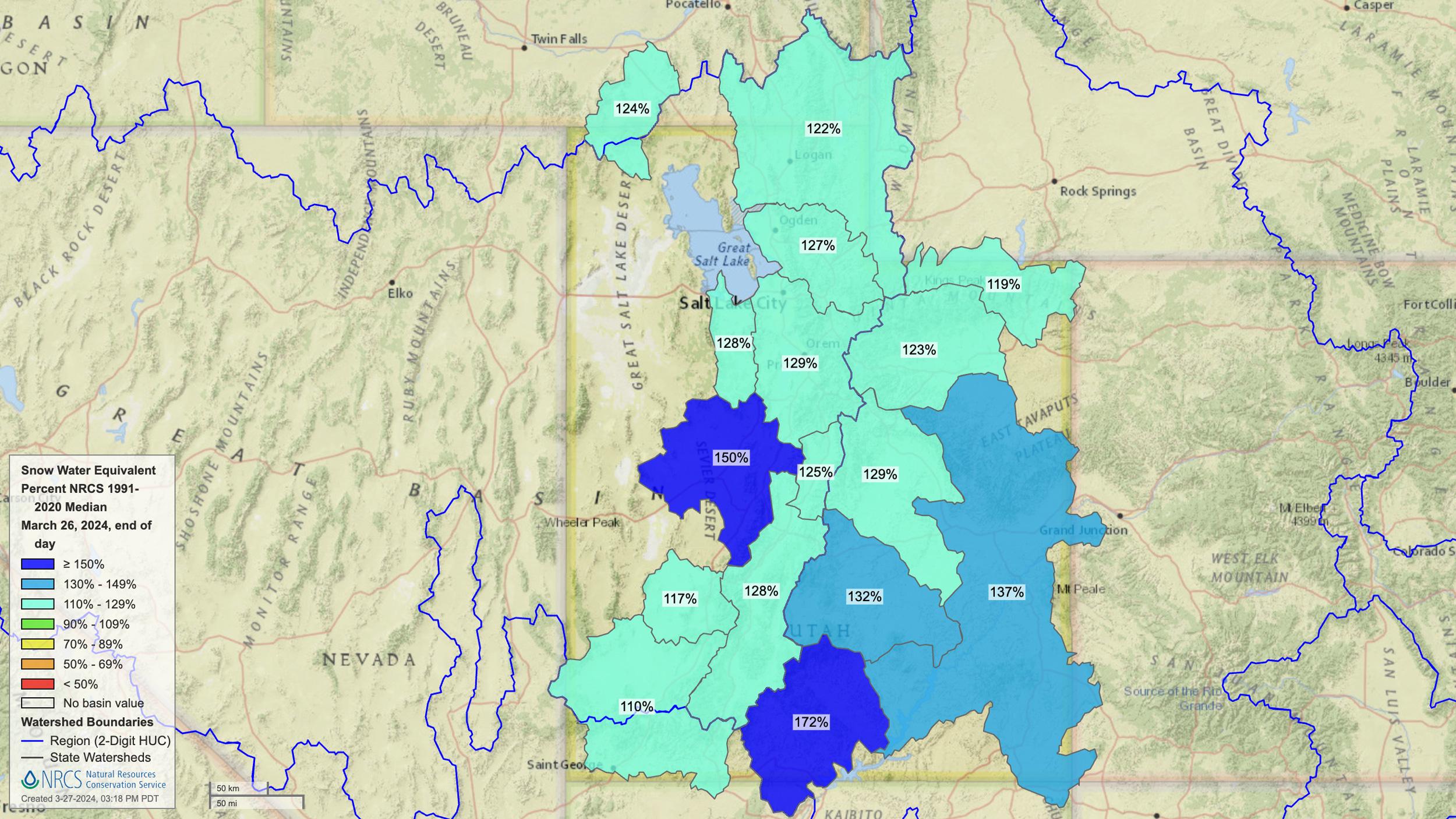
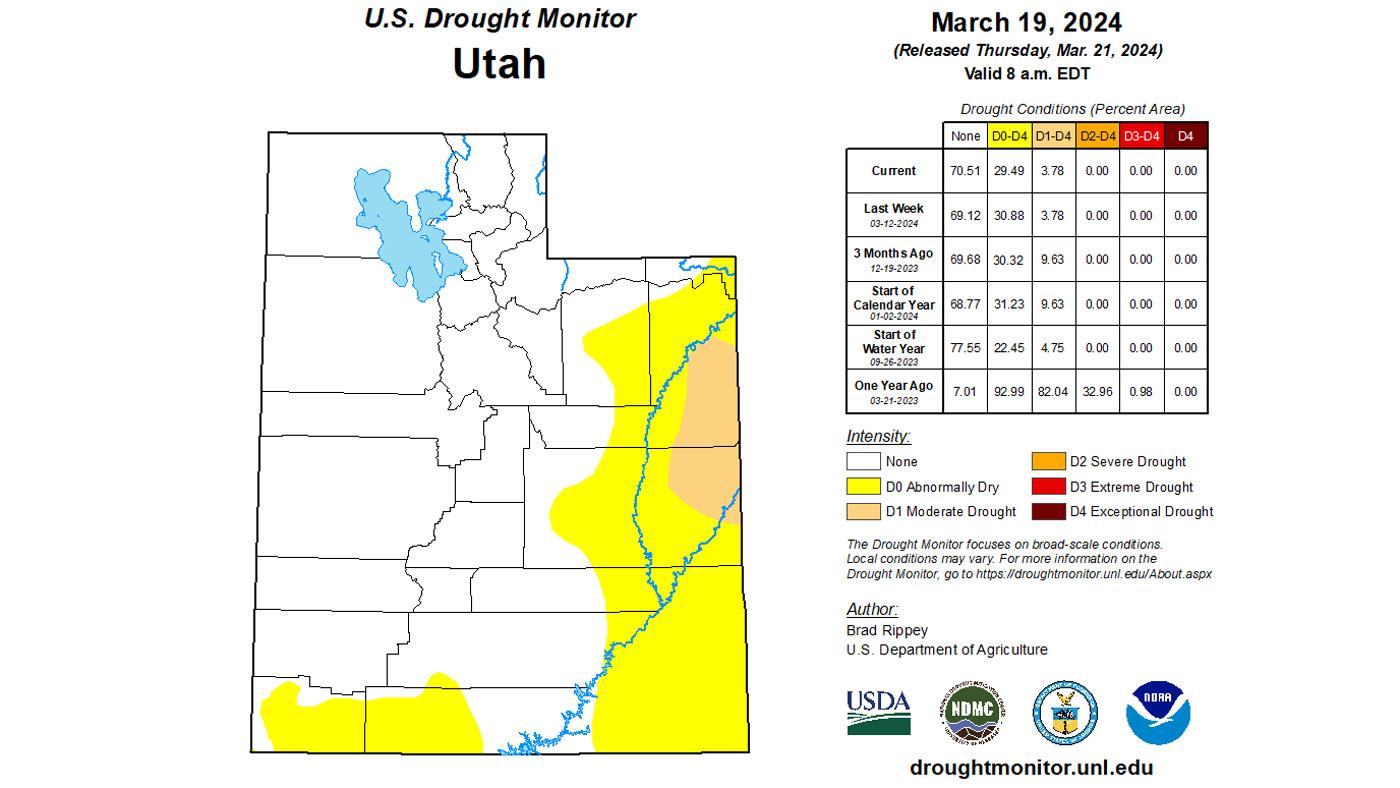
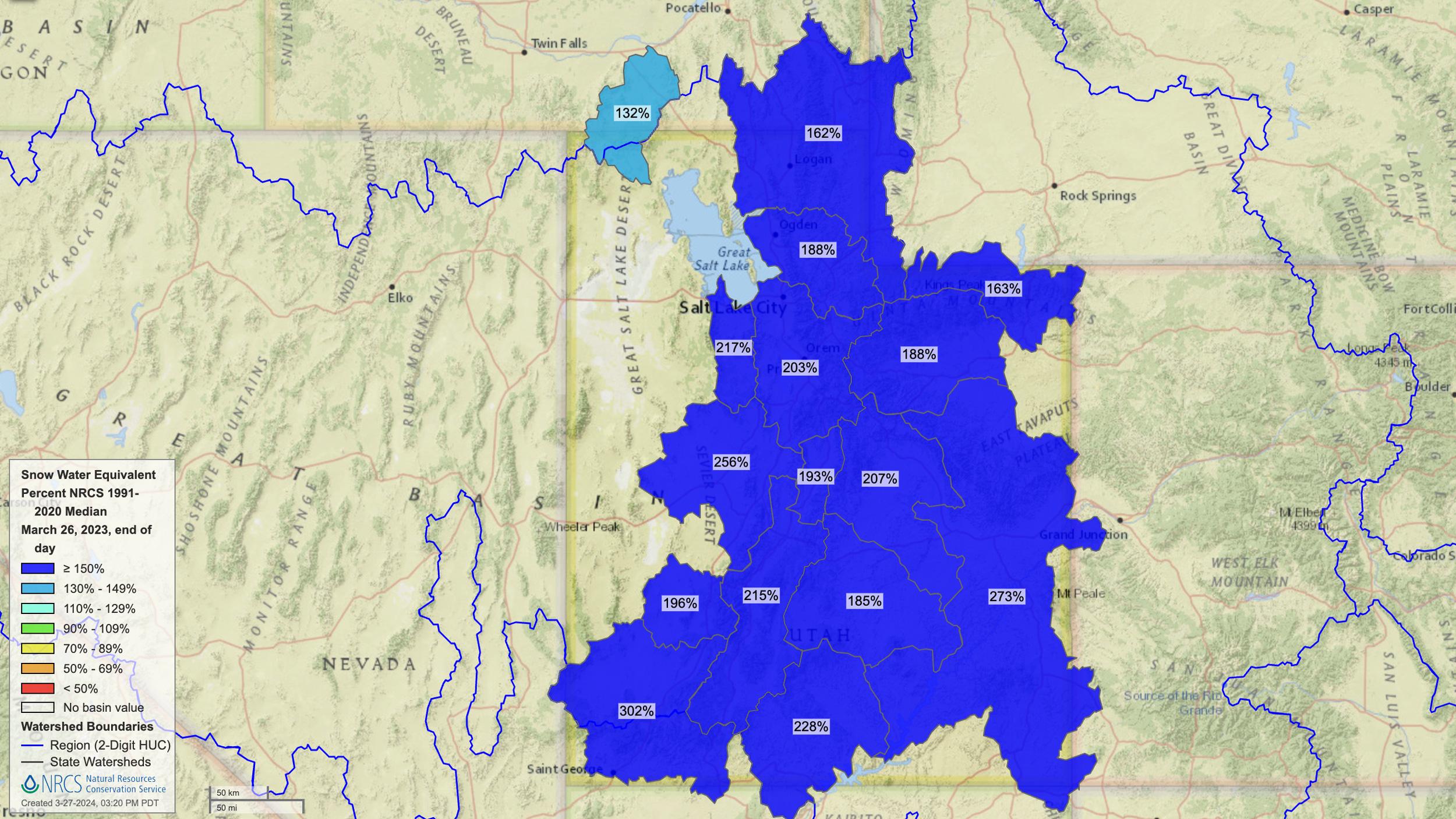
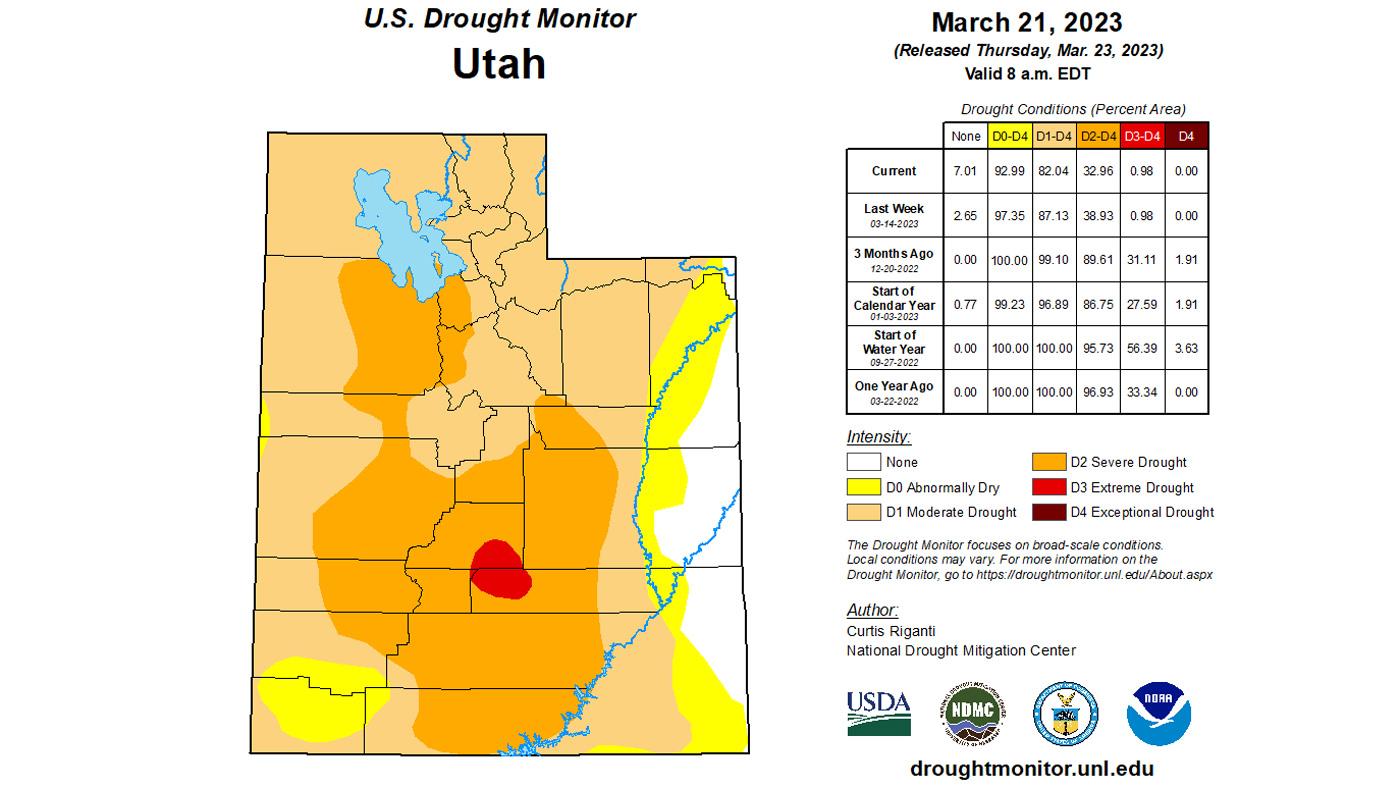
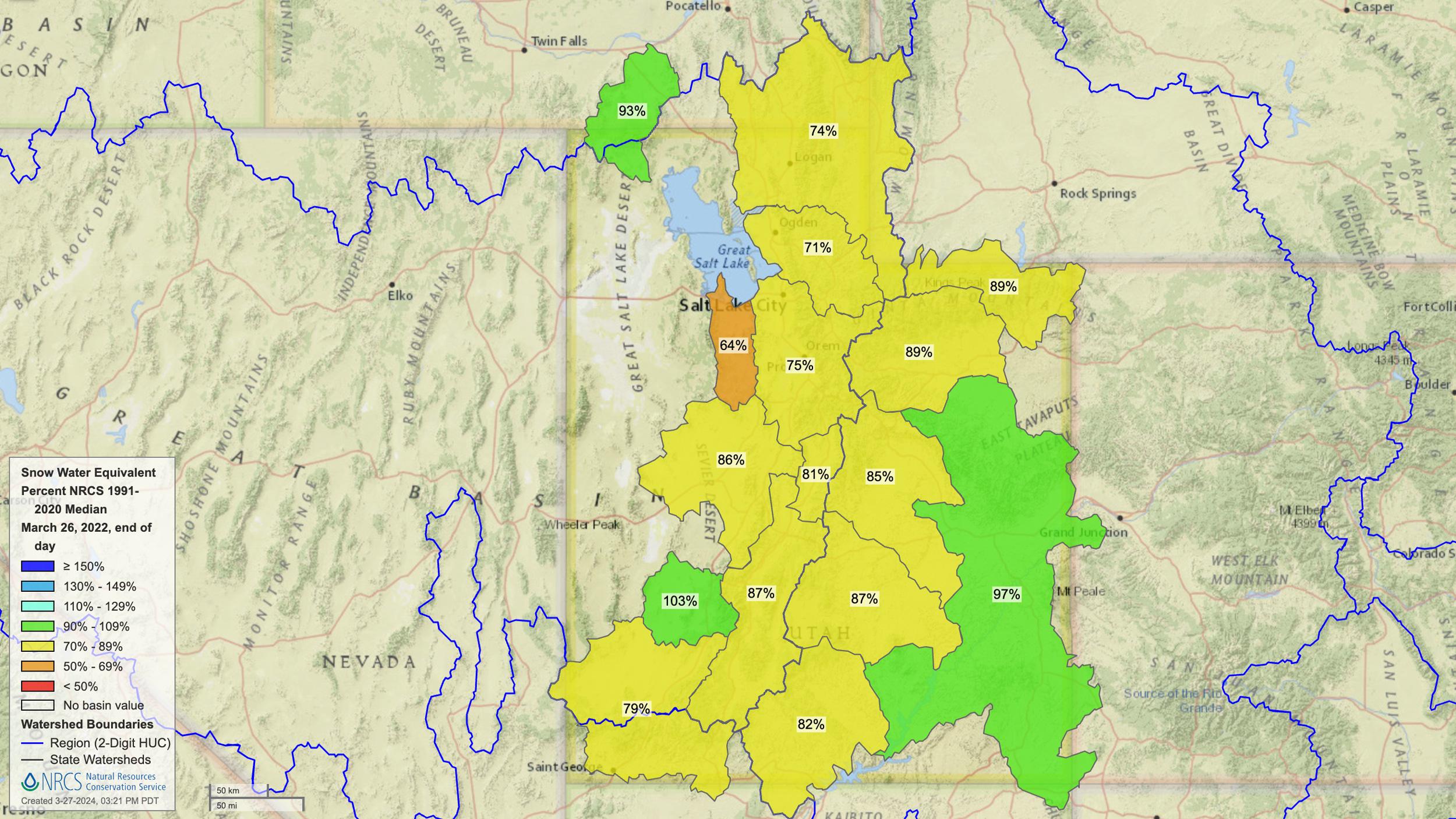
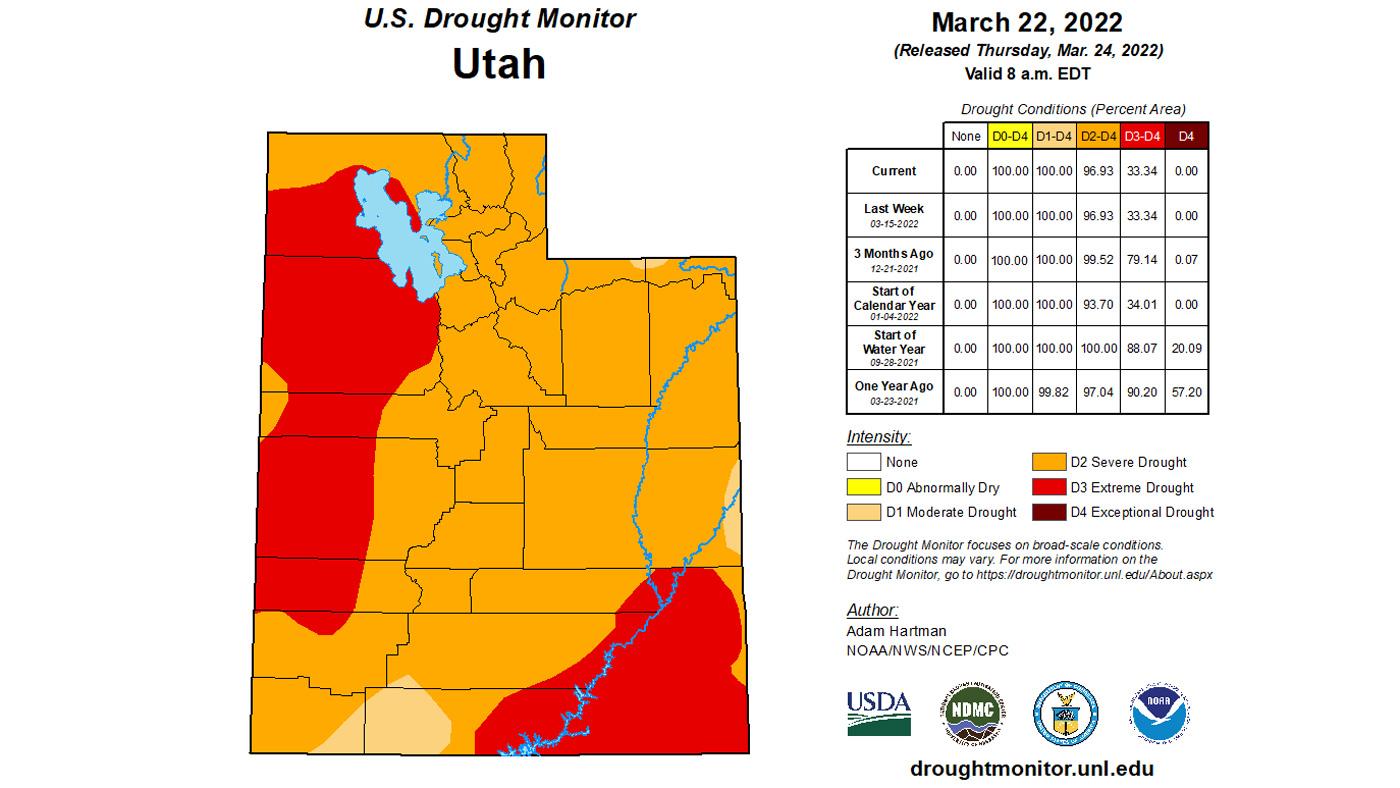
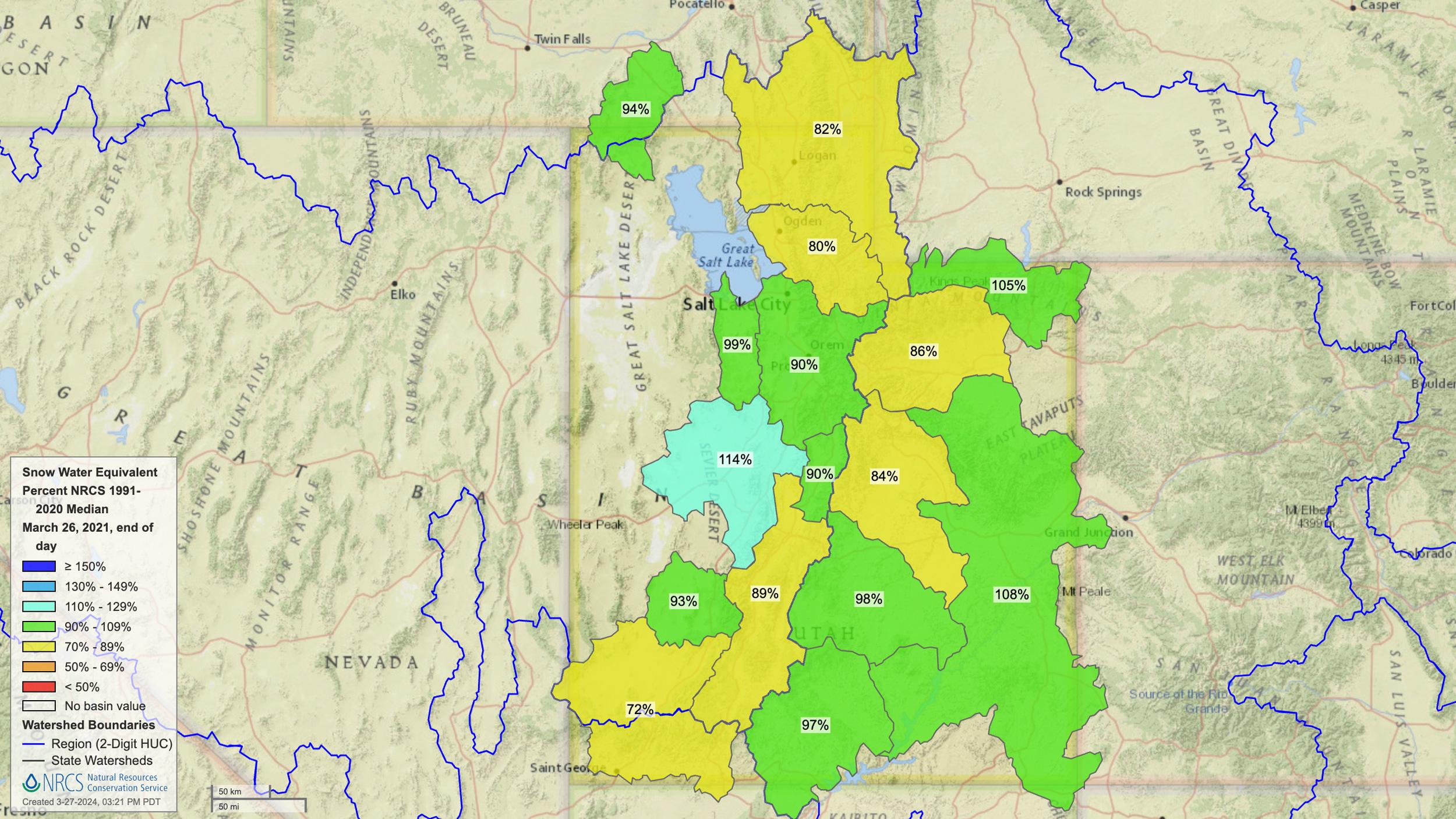
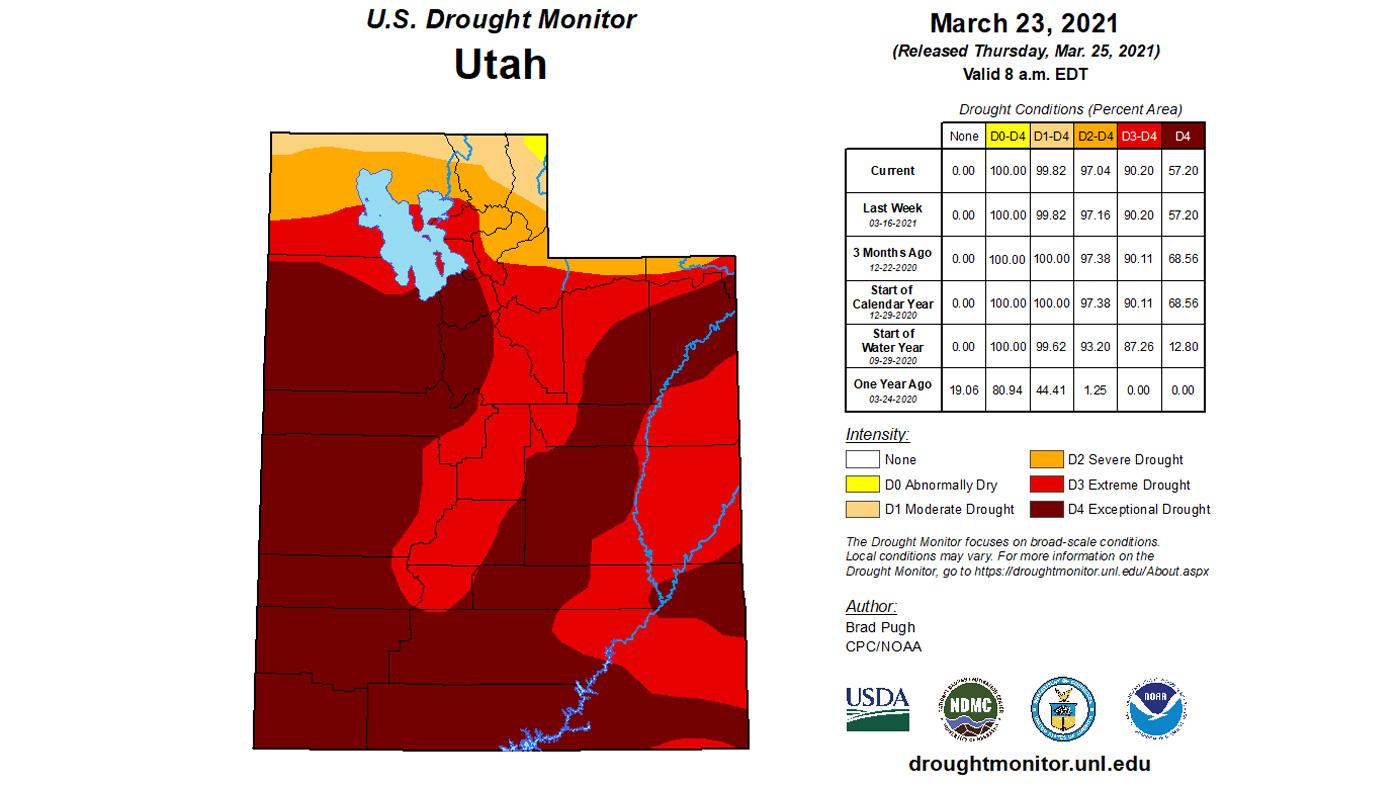
Unit |
Population 2023 |
Population objective |
Buck:doe ratio 2023 |
Buck:doe ratio objective |
Beaver |
9,400 |
14,000 |
20:100 |
15-17 |
Book Cliffs |
5,500 |
9,000 |
37:100 |
25-30 |
Box Elder |
17,000 |
20,000 |
22:100 |
18-20 |
Cache |
12,500 |
25,000 |
19:100 |
15-17 |
Central Mtns, Manti |
26,500 |
28,000 |
19:100 |
15-17 |
Central Mtns, Nebo |
13,100 |
14,000 |
17:100 |
15-17 |
Chalk Creek |
5,900 |
12,000 |
24:100 |
18-20 |
East Canyon |
2,400 |
13,500 |
22:100 |
18-20 |
Fillmore |
8,000 |
9,600 |
24:100 |
15-17 |
Henry Mtns |
955 |
2,700 |
55:100 |
40-45 |
Boulder/Kaiparowits |
7,650 |
8,500 |
31:100 |
15-17 |
Kamas |
1,300 |
8,000 |
23:100 |
18-20 |
La Sal |
5,500 |
8,000 |
17:100 |
15-17 |
Monroe |
5,000 |
7,000 |
21:100 |
15-17 |
Morgan-South Rich |
1,900 |
16,000 |
21:100 |
18-20 |
Mt Dutton |
1,980 |
3,200 |
22:100 |
15-17 |
Nine Mile |
6,300 |
8,500 |
23:100 |
18-20 |
North Slope |
5,800 |
10,000 |
20:100 |
15-17 |
Ogden |
6,500 |
11,000 |
20:100 |
18-20 |
Oquirrh-Stansbury |
9,500 |
11,600 |
26:100 |
18-20 |
Panguitch Lake |
9,000 |
11,000 |
23:100 |
15-17 |
Paunsaugunt |
5,400 |
6,500 |
46:100 |
40-45 |
Pine Valley |
16,000 |
19,500 |
23:100 |
18-20 |
Plateau, Fishlake |
4,600 |
7,000 |
24:100 |
15-17 |
San Juan, Abajo Mtns |
11,900 |
13,500 |
17:100 |
15-17 |
San Juan, Elk Ridge |
950 |
2,000 |
34:100 |
25-30 |
South Slope, Diamond Mtn |
9,500 |
13,000 |
33:100 |
25-30 |
South Slope, Yellowstone |
7,400 |
11,000 |
19:100 |
18-20 |
Southwest Desert |
2,300 |
3,500 |
22:100 |
15-17 |
Wasatch Mtns Avintaquin |
3,600 |
4,000 |
25:100 |
15-17 |
Wasatch Mtns Current Creek |
15,500 |
17,000 |
25:100 |
15-15 |
Wasatch Mtns West |
12,700 |
22,600 |
15:100 |
15-17 |
West Desert |
7,800 |
11,200 |
* |
* |
Zion |
16,800 |
19,500 |
24:100 |
18-20 |
Unit | Population 2023 | Population objective | Buck:doe ratio 2023 | Buck:doe ratio objective |
Beaver | 9,400 | 14,000 | 20:100 | 15-17 |
Book Cliffs | 5,500 | 9,000 | 37:100 | 25-30 |
Box Elder | 17,000 | 20,000 | 22:100 | 18-20 |
Cache | 12,500 | 25,000 | 19:100 | 15-17 |
Central Mtns, Manti | 26,500 | 28,000 | 19:100 | 15-17 |
Central Mtns, Nebo | 13,100 | 14,000 | 17:100 | 15-17 |
Chalk Creek | 5,900 | 12,000 | 24:100 | 18-20 |
East Canyon | 2,400 | 13,500 | 22:100 | 18-20 |
Fillmore | 8,000 | 9,600 | 24:100 | 15-17 |
Henry Mtns | 955 | 2,700 | 55:100 | 40-45 |
Boulder/Kaiparowits | 7,650 | 8,500 | 31:100 | 15-17 |
Kamas | 1,300 | 8,000 | 23:100 | 18-20 |
La Sal | 5,500 | 8,000 | 17:100 | 15-17 |
Monroe | 5,000 | 7,000 | 21:100 | 15-17 |
Morgan-South Rich | 1,900 | 16,000 | 21:100 | 18-20 |
Mt Dutton | 1,980 | 3,200 | 22:100 | 15-17 |
Nine Mile | 6,300 | 8,500 | 23:100 | 18-20 |
North Slope | 5,800 | 10,000 | 20:100 | 15-17 |
Ogden | 6,500 | 11,000 | 20:100 | 18-20 |
Oquirrh-Stansbury | 9,500 | 11,600 | 26:100 | 18-20 |
Panguitch Lake | 9,000 | 11,000 | 23:100 | 15-17 |
Paunsaugunt | 5,400 | 6,500 | 46:100 | 40-45 |
Pine Valley | 16,000 | 19,500 | 23:100 | 18-20 |
Plateau, Fishlake | 4,600 | 7,000 | 24:100 | 15-17 |
San Juan, Abajo Mtns | 11,900 | 13,500 | 17:100 | 15-17 |
San Juan, Elk Ridge | 950 | 2,000 | 34:100 | 25-30 |
South Slope, Diamond Mtn | 9,500 | 13,000 | 33:100 | 25-30 |
South Slope, Yellowstone | 7,400 | 11,000 | 19:100 | 18-20 |
Southwest Desert | 2,300 | 3,500 | 22:100 | 15-17 |
Wasatch Mtns Avintaquin | 3,600 | 4,000 | 25:100 | 15-17 |
Wasatch Mtns Current Creek | 15,500 | 17,000 | 25:100 | 15-15 |
Wasatch Mtns West | 12,700 | 22,600 | 15:100 | 15-17 |
West Desert | 7,800 | 11,200 | * | * |
Zion | 16,800 | 19,500 | 24:100 | 18-20 |
Unit |
Trophy potential |
Harvest success |
Predictive resident points to draw (2025) |
Predictive nonresident points to draw (2025) |
Hunters satisfaction |
Antelope Island |
190”+ |
Rifle: 100% |
Random only |
No permits |
5.0 |
Paunsaugunt |
190”+ |
Archery: 56% |
100% with 21 |
100% with 28 |
4.0 |
Henry Mtns |
190”+ |
Archery: 100% |
100% with 23 |
Random only |
4.7 |
Fillmore, Oak Creek |
190”+ |
Archery: 69% |
11% with 19 |
Random only |
4.2 |
San Juan, Elk Ridge |
190”+ |
Archery: 73% |
100% with 22 |
21% with 22 |
3.3 |
La Sal, Dolores Triangle |
180”+ |
Archery: 100% |
26% with 15 |
No permits |
4.5 |
West Desert, Vernon |
170”+ |
Archery: 55% |
100% with 13 |
100% with 18 |
3.7 |
Book Cliffs |
170”+ |
Archery: 84% |
100% with 15 |
100% with 22 |
4.4 |
Book Cliffs, North |
170”+ |
Rifle: 91% |
27% with 15 |
10% with 22 |
3.6 |
Book Cliffs, South |
170”+ |
Rifle: 85% |
28% with 16 |
50% with 24 |
3.5 |
South Slope, Diamond Mtn |
170”+ |
Archery: 92% |
47% with 13 |
26% with 18 |
4.2 |
Unit | Trophy potential | Harvest success | Predictive resident points to draw (2025) | Predictive nonresident points to draw (2025) | Hunters satisfaction |
Antelope Island | 190”+ | Rifle: 100% | Random only | No permits | 5.0 |
Paunsaugunt | 190”+ | Archery: 56% | 100% with 21 | 100% with 28 | 4.0 |
Henry Mtns | 190”+ | Archery: 100% | 100% with 23 | Random only | 4.7 |
Fillmore, Oak Creek | 190”+ | Archery: 69% | 11% with 19 | Random only | 4.2 |
San Juan, Elk Ridge | 190”+ | Archery: 73% | 100% with 22 | 21% with 22 | 3.3 |
La Sal, Dolores Triangle | 180”+ | Archery: 100% | 26% with 15 | No permits | 4.5 |
West Desert, Vernon | 170”+ | Archery: 55% | 100% with 13 | 100% with 18 | 3.7 |
Book Cliffs | 170”+ | Archery: 84% | 100% with 15 | 100% with 22 | 4.4 |
Book Cliffs, North | 170”+ | Rifle: 91% | 27% with 15 | 10% with 22 | 3.6 |
Book Cliffs, South | 170”+ | Rifle: 85% | 28% with 16 | 50% with 24 | 3.5 |
South Slope, Diamond Mtn | 170”+ | Archery: 92% | 47% with 13 | 26% with 18 | 4.2 |
Unit |
Trophy potential |
Harvest success |
Predictive resident points to draw (2025) |
Predictive nonresident points to draw (2025) |
Hunters satisfaction |
Book Cliffs, Floy Canyon |
180”+ |
100% |
100% with 15 |
Random only |
4.2 |
East Canyon |
170”+ |
50% |
100% with 10 |
Random only |
4.0 |
Kaiparowits |
180”+ |
100% |
100% with 18 |
Random only |
3.0 |
San Juan, Mancos Mesa |
N/A |
New hunt |
New hunt |
New hunt |
N/A |
Unit | Trophy potential | Harvest success | Predictive resident points to draw (2025) | Predictive nonresident points to draw (2025) | Hunters satisfaction |
Book Cliffs, Floy Canyon | 180”+ | 100% | 100% with 15 | Random only | 4.2 |
East Canyon | 170”+ | 50% | 100% with 10 | Random only | 4.0 |
Kaiparowits | 180”+ | 100% | 100% with 18 | Random only | 3.0 |
San Juan, Mancos Mesa | N/A | New hunt | New hunt | New hunt | N/A |
Unit |
Trophy potential |
Harvest success |
Predictive resident points to draw (2025) |
Predictive nonresident points to draw (2025) |
Hunters satisfaction |
Pine Valley |
180”+ |
71% |
100% with 17 |
51% with 22 |
2.6 |
Fillmore |
180”+ |
82% |
100% with 14 |
Random only |
3.9 |
Southwest Desert |
180”+ |
40% |
51% with 16 |
Random only |
3.4 |
Boulder/Kaiparowits |
180”+ |
44% |
100% with 10 |
Random only |
2.8 |
Beaver |
180”+ |
75% |
100% with 10 |
Random only |
3.4 |
Zion |
180”+ |
73% |
51% with 13 |
24% with 23 |
2.9 |
Fishlake |
170”+ |
80% |
52% with 11 |
Random only |
2.6 |
La Sal, La Sal Mtns |
170”+ |
29% |
100% with 10 |
Random only |
2.4 |
Panguitch Lake |
170”+ |
57% |
100% with 10 |
Random only |
3.9 |
San Juan, Abajo Mtns |
170”+ |
88% |
100% with 8 |
Random only |
3.3 |
Wasatch Mtns, West |
170”+ |
46% |
100% with 6 |
95% with 4 |
2.9 |
Box Elder |
170”+ |
65% |
100% with 6 |
100% with 19 |
3.8 |
Monroe |
160”+ |
60% |
100% with 15 |
Random only |
2.6 |
Mt. Dutton |
160”+ |
75% |
24% with 8 |
Random only |
3.5 |
Wasatch Mtns, East |
160”+ |
78% |
60% with 10 |
69% with 9 |
3.9 |
Nebo |
160”+ |
76% |
100% with 8 |
36% with 13 |
3.5 |
Manti/ San Rafael |
160”+ |
77% |
100% with 11 |
100% with 15 |
3.1 |
Unit | Trophy potential | Harvest success | Predictive resident points to draw (2025) | Predictive nonresident points to draw (2025) | Hunters satisfaction |
Pine Valley | 180”+ | 71% | 100% with 17 | 51% with 22 | 2.6 |
Fillmore | 180”+ | 82% | 100% with 14 | Random only | 3.9 |
Southwest Desert | 180”+ | 40% | 51% with 16 | Random only | 3.4 |
Boulder/Kaiparowits | 180”+ | 44% | 100% with 10 | Random only | 2.8 |
Beaver | 180”+ | 75% | 100% with 10 | Random only | 3.4 |
Zion | 180”+ | 73% | 51% with 13 | 24% with 23 | 2.9 |
Fishlake | 170”+ | 80% | 52% with 11 | Random only | 2.6 |
La Sal, La Sal Mtns | 170”+ | 29% | 100% with 10 | Random only | 2.4 |
Panguitch Lake | 170”+ | 57% | 100% with 10 | Random only | 3.9 |
San Juan, Abajo Mtns | 170”+ | 88% | 100% with 8 | Random only | 3.3 |
Wasatch Mtns, West | 170”+ | 46% | 100% with 6 | 95% with 4 | 2.9 |
Box Elder | 170”+ | 65% | 100% with 6 | 100% with 19 | 3.8 |
Monroe | 160”+ | 60% | 100% with 15 | Random only | 2.6 |
Mt. Dutton | 160”+ | 75% | 24% with 8 | Random only | 3.5 |
Wasatch Mtns, East | 160”+ | 78% | 60% with 10 | 69% with 9 | 3.9 |
Nebo | 160”+ | 76% | 100% with 8 | 36% with 13 | 3.5 |
Manti/ San Rafael | 160”+ | 77% | 100% with 11 | 100% with 15 | 3.1 |
Points |
Resident |
Nonresident |
1 |
3,824 |
3,654 |
2 |
3,309 |
2,985 |
3 |
3,357 |
2,449 |
4 |
3,004 |
2,345 |
5 |
2,875 |
2,128 |
6 |
2,542 |
2,205 |
7 |
2,577 |
1,885 |
8 |
2,505 |
1,839 |
9 |
2,100 |
1,364 |
10 |
1,834 |
1,328 |
11 |
1,750 |
1,249 |
12 |
1,669 |
1,117 |
13 |
1,650 |
1,166 |
14 |
1,429 |
1,215 |
15 |
1,296 |
1,393 |
16 |
1,067 |
2,513 |
17 |
852 |
515 |
18 |
744 |
403 |
19 |
674 |
402 |
20 |
572 |
315 |
21 |
466 |
247 |
22 |
392 |
238 |
23 |
255 |
198 |
24 |
192 |
171 |
25 |
119 |
107 |
26 |
46 |
89 |
27 |
26 |
56 |
28 |
10 |
25 |
29 |
4 |
7 |
30 |
0 |
2 |
31 |
1 |
3 |
Total |
41,141 |
33,613 |
Points | Resident | Nonresident |
1 | 3,824 | 3,654 |
2 | 3,309 | 2,985 |
3 | 3,357 | 2,449 |
4 | 3,004 | 2,345 |
5 | 2,875 | 2,128 |
6 | 2,542 | 2,205 |
7 | 2,577 | 1,885 |
8 | 2,505 | 1,839 |
9 | 2,100 | 1,364 |
10 | 1,834 | 1,328 |
11 | 1,750 | 1,249 |
12 | 1,669 | 1,117 |
13 | 1,650 | 1,166 |
14 | 1,429 | 1,215 |
15 | 1,296 | 1,393 |
16 | 1,067 | 2,513 |
17 | 852 | 515 |
18 | 744 | 403 |
19 | 674 | 402 |
20 | 572 | 315 |
21 | 466 | 247 |
22 | 392 | 238 |
23 | 255 | 198 |
24 | 192 | 171 |
25 | 119 | 107 |
26 | 46 | 89 |
27 | 26 | 56 |
28 | 10 | 25 |
29 | 4 | 7 |
30 | 0 | 2 |
31 | 1 | 3 |
Total | 41,141 | 33,613 |
Points |
Resident |
Nonresident |
1 |
39,994 |
4,946 |
2 |
20,142 |
3,611 |
3 |
9,173 |
3,111 |
4 |
4,255 |
2,787 |
5 |
1,434 |
2,276 |
6 |
646 |
1,671 |
7 |
416 |
1,231 |
8 |
279 |
841 |
9 |
168 |
531 |
10 |
122 |
395 |
11 |
94 |
351 |
12 |
78 |
336 |
13 |
77 |
382 |
14 |
36 |
444 |
15 |
22 |
149 |
16 |
21 |
91 |
17 |
8 |
44 |
18 |
7 |
43 |
19 |
4 |
34 |
20 |
2 |
41 |
21 |
2 |
29 |
22 |
2 |
10 |
23 |
2 |
14 |
24 |
0 |
12 |
25 |
0 |
2 |
Total |
76,984 |
23,382 |
Points | Resident | Nonresident |
1 | 39,994 | 4,946 |
2 | 20,142 | 3,611 |
3 | 9,173 | 3,111 |
4 | 4,255 | 2,787 |
5 | 1,434 | 2,276 |
6 | 646 | 1,671 |
7 | 416 | 1,231 |
8 | 279 | 841 |
9 | 168 | 531 |
10 | 122 | 395 |
11 | 94 | 351 |
12 | 78 | 336 |
13 | 77 | 382 |
14 | 36 | 444 |
15 | 22 | 149 |
16 | 21 | 91 |
17 | 8 | 44 |
18 | 7 | 43 |
19 | 4 | 34 |
20 | 2 | 41 |
21 | 2 | 29 |
22 | 2 | 10 |
23 | 2 | 14 |
24 | 0 | 12 |
25 | 0 | 2 |
Total | 76,984 | 23,382 |
Unit |
Trophy potential |
Harvest success |
Predictive resident points to draw (2025) |
Predictive nonresident points to draw (2025) |
Hunters satisfaction |
Pine Valley |
180”+ |
Archery: 24% |
30% with 0 |
70% with 3 |
3.4 |
Zion |
180”+ |
Archery: 34% |
74% with 0 |
100% with 3 |
3.4 |
Southwest Desert |
170”+ |
Archery: 25% |
13% with 0 |
44% with 4 |
3.2 |
Boulder/Kaiparowits |
170”+ |
Archery: 27% |
52% with 1 |
15% with 2 |
3.4 |
Fillmore |
170”+ |
Archery: 22% |
100% with 1 |
53% with 0 |
3.6 |
Nine Mile |
170”+ |
Archery: 28% |
78% with 0 |
67% with 0 |
3.1 |
San Juan, Abajo Mtns |
170”+ |
Archery: 30% |
36% with 0 |
47% with 4 |
3.7 |
Beaver |
170”+ |
Archery: 24% |
46% with 1 |
100% with 2 |
3.4 |
Yellowstone |
170”+ |
Archery: 24% |
26% with 2 |
47% with 1 |
3.3 |
La Sal, La Sal Mtns |
170”+ |
Archery: 34% |
55% with 1 |
34% with 3 |
3.7 |
Fishlake |
160”+ |
Archery: 23% |
100% with 2 |
100% with 2 |
3.4 |
Panguitch Lake |
160”+ |
Archery: 33% |
98% with 2 |
79% with 5 |
3.4 |
Manti/ San Rafael |
160”+ |
Archery: 20% |
73% with 1 |
26% with 0 |
3.4 |
Nebo |
160”+ |
Archery: 13% |
84% with 0 |
100% with 0 |
3.3 |
Monroe |
160”+ |
Archery: 26% |
71% with 3 |
40% with 4 |
3.5 |
Mt. Dutton |
160”+ |
Archery: 22% |
22% with 1 |
100% with 4 |
3.7 |
Cache |
160”+ |
Archery: 12% |
48% with 0 |
100% with 0 |
3.3 |
Vernal/Bonanza |
160”+ |
Archery: 36% |
48% with 2 |
56% with 0 |
3.4 |
Unit | Trophy potential | Harvest success | Predictive resident points to draw (2025) | Predictive nonresident points to draw (2025) | Hunters satisfaction |
Pine Valley | 180”+ | Archery: 24% | 30% with 0 | 70% with 3 | 3.4 |
Zion | 180”+ | Archery: 34% | 74% with 0 | 100% with 3 | 3.4 |
Southwest Desert | 170”+ | Archery: 25% | 13% with 0 | 44% with 4 | 3.2 |
Boulder/Kaiparowits | 170”+ | Archery: 27% | 52% with 1 | 15% with 2 | 3.4 |
Fillmore | 170”+ | Archery: 22% | 100% with 1 | 53% with 0 | 3.6 |
Nine Mile | 170”+ | Archery: 28% | 78% with 0 | 67% with 0 | 3.1 |
San Juan, Abajo Mtns | 170”+ | Archery: 30% | 36% with 0 | 47% with 4 | 3.7 |
Beaver | 170”+ | Archery: 24% | 46% with 1 | 100% with 2 | 3.4 |
Yellowstone | 170”+ | Archery: 24% | 26% with 2 | 47% with 1 | 3.3 |
La Sal, La Sal Mtns | 170”+ | Archery: 34% | 55% with 1 | 34% with 3 | 3.7 |
Fishlake | 160”+ | Archery: 23% | 100% with 2 | 100% with 2 | 3.4 |
Panguitch Lake | 160”+ | Archery: 33% | 98% with 2 | 79% with 5 | 3.4 |
Manti/ San Rafael | 160”+ | Archery: 20% | 73% with 1 | 26% with 0 | 3.4 |
Nebo | 160”+ | Archery: 13% | 84% with 0 | 100% with 0 | 3.3 |
Monroe | 160”+ | Archery: 26% | 71% with 3 | 40% with 4 | 3.5 |
Mt. Dutton | 160”+ | Archery: 22% | 22% with 1 | 100% with 4 | 3.7 |
Cache | 160”+ | Archery: 12% | 48% with 0 | 100% with 0 | 3.3 |
Vernal/Bonanza | 160”+ | Archery: 36% | 48% with 2 | 56% with 0 | 3.4 |
Note: The application timeframe for all Utah species is March 20 to April 24, 2025, at 11 p.m. MT. Applicants wishing to purchase preference and/or bonus points can do so prior to the April 24 deadline or, if they miss that deadline, they can apply for points only during the antlerless application timeframe from June 4 to 18, 2025. You may apply online here.
To aid in your research and planning efforts, we created a brand new tool for Insiders called Hunt Planner. This tool will help you be more efficient at planning for hunts and also keeps all your research data organized. No more notepads getting lost or headaches when trying to remember what units caught your eye during your research! Everything you need is always in one place at GOHUNT.
What can you do in Hunt Planner?
Point Tracker allows you to enter the number of points you have for each state and species and, as you research through Filtering and Draw Odds, your point total will automatically be highlighted.
To view important information and an overview of Utah’s rules/regulations, the draw system and bonus points, tag and license fees and an interactive boundary line map, check out our State Profile. You can also view the Utah Deer Profiles to access historical and statistical data to help you find trophy areas.
Note: Applicants need to buy either a hunting license or combination hunting/fishing license to apply. Applicants will not be charged the cost of the permit unless they are successful in the draw.
Every applicant will need to have a valid hunting license to apply for hunts or even bonus and preference points only. That hunting license is valid for 365 days from the date of purchase. Applicants can buy one hunting license every two years and apply if they time it correctly. For example, if you purchase a hunting license and apply on the last day of this application period and then apply early in next year's application period, you could apply for two years on one hunting license. You do not need a valid hunting license to actually hunt; you only need it to apply in the draw.
The permit split offers 90% to residents and 10% to nonresidents.
Recommend permits for the three weapon types are based on the following percentages: 20% archery, 20% muzzleloader and 60% any weapon. On some units, these percentages may be altered to help achieve buck-to-doe ratio objectives.
Utah has a hybrid draw system for limited entry deer permits. Limited entry deer permits are: premium limited entry deer, limited entry deer, management and cactus buck deer, and handgun, archery, muzzleloader and shotgun (HAMS) hunts. Those are not separate species/hunts that you can apply for. You can only apply for one.
These units/hunts are managed for higher buck:doe ratios (40-45:100) and a higher quality hunt. The Henry Mountains, Paunsaugunt and Antelope Island hunts fall under this category. There are archery, muzzleloader, rifle and multi-season hunts available for the Henry Mountains and the Paunsaugunt. Antelope Island only offers a rifle permit.
Limited entry units are managed for a slightly lower buck:doe ratio (25-30:100) than the premium units. These units offer good hunts, but quality is not typically on par with the premium units. There are archery, muzzleloader, rifle and multi-season hunts for these units and the odds of drawing these hunts are better than the premium units. There are also late season muzzleloader limited entry hunts that occur on general season units. These hunts run from Oct. 29 to Nov. 6. Be aware that the late muzzleloader hunts on general season units are limited entry hunts and utilize the bonus point hybrid draw system. If you draw one of these permits, you will lose any accumulated bonus points.
The Paunsaugunt Unit will have archery, muzzleloader and rifle hunts for management (bucks with three points or less on at least one antler). This unit will also have a cactus buck hunt (bucks with velvet covering at least 50% of its antlers during the season dates). The management and cactus buck hunts are limited entry hunts and successful applicants will lose any accumulated bonus points should they draw.
HAMS hunts will occur on the Book Cliffs/Floy Canyon, Kaiparowits, East Canyon and San Juan/Mancos Mesa Units, and runs from Nov. 3 to 30. The dates are ideal for a rutting mule deer hunt, but these are HAMS hunts. If you draw one of these permits, you will lose any accumulated bonus points.
The limited entry deer hunts listed above utilize a hybrid bonus point system. UDWR allocates 50% of the permits for each hunt to the applicants with the most bonus points and 50% are randomly allocated. The random draw takes into consideration the number of points each applicant has, meaning you get more chances in the random draw with each point you have. For example, if I have no points, I get one chance. If I have 10 points, I get 11 chances (one for each point I have and one for this year’s application). If there is an odd number of permits available, the bulk go to high point holders. The remaining permits will be randomly allocated. If there is one permit only, it will be randomly allocated.
Bonus points are given for each year an applicant applies for a limited entry hunt and is unsuccessful in the draw. Bonus points are species specific, meaning you cannot apply bonus points for limited entry elk toward a limited entry deer hunt. We highly recommend that applicants apply for limited entry hunts and not for bonus points only. With Utah offering half of their permits through a random draw, applicants should apply for hunts. They will receive a bonus point if they are unsuccessful in the draw.
Residents can apply for general season deer, dedicated hunter deer and one limited entry species: either premium/limited entry deer, limited entry elk or limited entry antelope. Residents can also apply for one once-in-a-lifetime species: moose, bighorn sheep, bison or mountain goat. Nonresidents can apply for every species they are interested in.
General season deer hunts are allocated in the state draw. There are no over-the-counter (OTC) deer options for residents or nonresidents. General season deer permits are allocated through a true preference point system. This means that the applicants with the most preference points for any given hunt receive the permits. Applicants can gain one preference point per year by applying for it as a first choice or by applying for a hunt and being unsuccessful in the draw. Applicants can include up to five hunt choices; however, applicants will lose their points if they draw any choice. Utah considers every applicant's first choice before moving to any applicant’s second choice. To draw a permit as a second choice, there must be a surplus of permits after every applicant’s first choice is considered.
20% of the general season deer permits are allocated to youth applicants. Youth who apply for and draw a general season, any weapon permit can also hunt the archery, muzzleloader and rifle season(s).
When considering general season deer hunts, the detailed draw odds pages are critical for the hunt(s) you are considering. Make sure you understand point creep and know how to read the draw trends.
The dedicated hunter program is offered on general season units. This program is a unique opportunity that allows a hunter to hunt all seasons (archery, muzzleloader, rifle) and harvest two bucks in a three-year period. The dedicated hunter program allocates permits using a true preference point system. The applicants with the most preference points who apply for any given hunt will be guaranteed the permit. If drawn, you will be enrolled in the program for three years. You may obtain a permit and hunt all three years, but you can only harvest two bucks in a three-year period. You can only hunt the unit you originally drew. In exchange for having a guaranteed permit and the opportunity to hunt all three seasons, a hunter must complete 32 service hours on UDWR approved conservation projects or you can purchase all or a portion of your hours at a cost of $40/per hour.
If you can afford the cost and time to hunt multiple seasons, the dedicated hunter program is an excellent way to scout, hunt and harvest a big buck on a general season unit.
Applicants can select two hunt choices when applying for limited entry hunts. Every applicant’s first choice is considered before moving to anyone's second choice. It is extremely rare for a limited entry permit to be drawn as a second choice.
General season deer applicants can select up to five hunt choices. Be aware that if you draw any of your five choices, you will lose any accumulated preference points.
Up to four applicants can apply for limited entry and general season deer hunts on one application. Group applications are not accepted for management buck hunts. Nonresidents and residents can apply together. Bonus points and preference points are averaged for a group application and rounded down to the nearest whole number. There must be enough permits to cover the number of applicants on your group application; otherwise it will be rejected. That goes for residents and nonresidents who apply together as a group. Nonresident permits will come out of the nonresident pool for that hunt — make sure there are enough permits if you apply in a group.
Utah’s draw goes in the following order from first to last:
Utah does not allow applicants to draw multiple limited entry tags in the same draw/year. Applicants also cannot draw both a limited entry deer and general season deer hunt in the same year. If you draw a limited entry deer permit, your general season deer application will not be considered in the draw, but you will receive a preference point. You also cannot draw a limited entry and a once-in-a-lifetime (moose, bighorn sheep, mountain goat or bison) permit in the same year. Because of the order of the draw, if you draw a limited entry permit, your once-in-a-lifetime application will not be considered in the draw, but you will receive a bonus point(s).
Utah adopted a new mule deer plan last year and, with a new plan, comes change. First and foremost, Utah elected to reduce the buck to doe ratios in many general season units from 18 to 21 bucks per 100 does to 15 to 17. Additionally, the premium limited entry deer units also had buck to doe ratios that were reduced by five. The changes in general season units were made based on new studies from Utah that suggest that a lower ratio may be more productive for herd growth as a whole and it’s also possible that it may slow the spread of chronic wasting disease (CWD). CWD isn’t prevalent throughout the state, but there are some cases, and it’s always a concern.
The lower buck to doe ratios on many of Utah’s historically better general season units has been a hot topic of discussion. With a lowered ratio, the state will undoubtedly offer more permits for those areas to hit the new objectives. Increased permits will mean more people will get a chance to go hunting this fall, but it may also come with some costs. More permits equates to more hunting pressure, more bucks being harvested and, quite likely, a decreasing number of older age class trophy caliber bucks. There will always be a few great bucks on most general season units, but looking forward, there will be fewer of them. Utah’s new mule deer plan has chosen opportunity over trophy, herd growth and health for a higher quality hunting experience. I understand and see both sides of the debate: on one hand, I want to hunt more often; on the other, I am less optimistic about my opportunity to hunt and kill a great buck on a general season unit. Management will always be socially debated; every hunter has their own objectives. Time will tell what the public wants and if the reduced ratio does, in fact, improve herd health and aid in increasing the populations as a whole.
There were also a few other changes in the plan worth noting. One, applicants will no longer be able to apply for and build points for both general season deer and dedicated hunter deer. This change should improve draw odds for both general season deer and the dedicated hunter program. It’s not a change that most die-hard deer hunters are happy about, but it will improve odds, which I personally think is a good thing. Two, a few units will be converted to restricted muzzleloader and restricted rifle. Those units are the Cache, Boulder/Kaioparwits and the Beaver/West. The archery hunts in those units will still allow modern compound bows. The restricted weapons hunts are being implemented to see if that change can yield more opportunity/permits while decreasing harvest success and, thus, allow more bucks to mature and grow trophy caliber racks. While I understand some frustration with the restricted weapons, I do think it has the potential to improve trophy quality and those units will be worth watching over the next five years. It may eventually be worth adapting to the restricted weapons for the opportunity to hunt bigger bucks. Once again, I think it’s too early to see results but it’s worth keeping track of. Third, the new plan created a separate extended archery hunt that applicants can apply for on its own. Previously, applicants who drew any archery deer tag or hunters enrolled in the dedicated hunter deer program could hunt the late extended seasons in the units where that was offered (mostly along the Wasatch Front). In some cases, hunters were applying and drawing permits for easy to draw units with no intention of hunting the area they drew so that they could hunt the late season extended hunt. This new hunt will hopefully allow those applicants to draw the extended season permit and leave opportunities to people who really want to hunt the other areas. It’s worth noting that if you draw an archery tag in another unit or you are enrolled in the dedicated hunter program and you do not fill your permit, you can still hunt the extended archery season/units. Lastly, and most recently, within the last week, we have caught wind that going into the 2026 application period Utah is likely to massively increase nonresident hunting licenses, application fees and permit costs. It’s yet to be seen how high those costs might soar, but it could — and probably will be — as much as a 100% increase. The exorbitant costs may put Utah out of touch for many nonresidents and my advice would be to utilize your bonus and preference points this year if you can and reevaluate the cost/benefit in 2026 to see if Utah still makes sense.
Currently, I do think Utah is worth applying. With 50% of the permits for each limited entry hunt being randomly allocated, I’d suggest applying for limited entry deer and other limited entry species. General season deer is a true preference points system and, as I stated above, I think applicants should try to draw a permit if they have the points and hunt in 2025. It’s tough to say if it will be worth it moving into 2026. This coming fall should still offer slightly higher buck;doe ratios and there are going to be more permits allocated. Although many of Utah’s best general season units have not received the snowpack that is ideally suited to growing the biggest bucks, it should still be a good antler growth year and hunt in 2025. Central and northern Utah had great survival and great moisture so those areas should produce. Overall, Utah is still a great mule deer state and I’d suggest people apply and draw permits if they can. It’s hard to say if higher prices on the horizon and decreasing buck to doe ratios will offer good hunts in the future.
These hunts occur on the general season units from Oct. 29 to Nov. 6 and permit holders can only hunt with a muzzleloader. These hunts are limited entry, occurring on all general season units and, if you draw one, all of your bonus points will be utilized. It’s worth noting that these hunts will begin two days after the rifle general season hunts. The dates are also prior to the prime dates of the rut, which typically occur throughout the middle of November into December. They are not managed for high buck to doe ratios or trophy potential although some great bucks have been killed. The bonus points required to draw these tags is close or slightly less than the limited entry hunts. If you apply for one of these hunts, I would suggest taking as much of the hunt off as possible. Pre-season scouting can be beneficial, but with the rifle general season hunt going on just prior to it, it may not be as helpful as you would hope.
If Utah were to get some early snow storms and cold weather in 2025, this can be a decent hunt, but I would suggest it’s more of an opportunity type of hunt than a hunt for a mature trophy caliber buck. Below are the better options for these limited entry hunts. There will be a handful of giant bucks killed this fall on these hunts, likely from areas with high buck to doe ratios and units that have had a fewer number of general season permits in more recent years.
2025 maximum bonus points for limited entry deer: 31
2025 maximum preference points for general season deer: 25
*The Boulder/Kaiparowits and Cache Units will only allow restricted muzzleloaders and rifles to be used in 2025 during those hunts. As such, it’s tough to say how many preference points will be required to draw those areas. The quality of those hunts should improve in the coming years, but it’s likely too early to see what the outcome will be in terms of trophy quality.
To explore the odds of hunts, log into your account, hover over the Insider header and then when the drop down appears, click on “Draw odds.” You can then select Utah as the state and then resident/nonresident or click the species “mule deer, limited entry.” That will allow you to see the odds for every limited entry deer hunt offered. You can do the same thing for general season hunts. I would suggest you also take a look at the detailed draw odds pages for each hunt you are considering in order to review five years of draw data and trends to help you predict what your chances will be this year.
As you review the number of people who have a significant number of preference points for the general season, you will see that there are many people packing points. If you are one of those applicants with over six points, you may consider applying as a party with a new hunter and going on a hunt. Many of the general season hunts can be drawn with very few points. If you have enough points to draw some of the better general season hunts, I would highly recommend burning those and going to Utah to hunt. Utah’s other limited entry species are tough to draw, so get some value out of the license you have to buy to apply every year and go on a general season deer hunt as often as you can!
Applicants can no longer apply for both general season deer and dedicated hunter deer hunts in the same year. They can only apply for one or the other.
Harvest surveys are mandatory for all species. Filing a report is required even if you did not harvest an animal. All hunters will have 30 days after your hunt ends to report. Failure to report will result in exclusion from 2026 applications or you will pay a $50 fee.
Magnified scopes stronger than 1x power are prohibited for all muzzleloader hunts. Open sights, red dot scopes or scopes with 1x power or less are allowed.
Nonresident owners of ATVs, off-highway motorcycles or snowmobiles who bring them to Utah to use must obtain a permit for their machine.
Applicants can edit their application free of charge at any time prior to the deadline.
Applicants will be able to view the proposed permit numbers for each hunt prior to applying. Tentative release for permit numbers is the first week of April.
All trail cameras are prohibited on public land from July 31 to Dec. 31, 2025.
A 2.2% processing fee on all credit card transactions will be added to your hunt application.
Blaze orange requirements for rifle hunters have changed; only one visual item of orange clothing is required.
The Beaver/West, Boulder/Kaiparowits and Cache Units have changed to restricted muzzleloader and restricted rifle hunts.
The Beaver Unit has been split into two units: Beaver, East and Beaver, West. There will be new hunts in both units.
There are new general season Oquirrh/Tintic archery, muzzleloader, rifle and dedicated deer hunts.
There are new general season Cedar/Stansbury archery, muzzleloader, rifle and dedicated hunter deer hunts.
There are new general season West Desert/Swasey archery, muzzleloader, rifle and dedicated deer hunts.
There is a new general season extended archery only archery deer hunt.
There is a new general season Box Elder early rifle deer hunt.
There is a new limited entry Henry Mtns management rifle deer hunt.
There are new limited entry Thousand Lake restricted archery, restricted muzzleloader, restricted rifle and restricted multiseason deer hunts.
There is a new limited entry Henry Mtns/Little Rockies rifle deer hunt.
There is a new limited entry La Sal/Castle Valley rifle deer hunt.
There is a new limited entry La Sal/Moab Valley rifle deer hunt.
There is a new limited entry Beaver/East late muzzleloader deer hunt.
There is a new limited entry Beaver/West late muzzleloader deer hunt.
There is a new limited entry Beaver/East late muzzleloader deer hunt.
There is a new limited entry Cedar/Stansbury late muzzleloader deer hunt.
There is a new limited entry Oquirrh/Tintic late muzzleloader deer hunt.
There is a new limited entry West Desert/Swasey late muzzleloader deer hunt.
There is a new limited entry San Juan/Mancos Mesa HAMS hunt.
Save unit seasons in Filtering.
Never lose track of units you want to further research.
Rank seasons.
Decide what unit to apply for or what order to place your units when applying on a state's website.
Compare seasons (up to three at a time).
Save the filter settings you used in Filtering to find a great hunt.
Add notes to your research folder under season level or hunt folder level.
And much more!
The deadline to apply is April 24, 2025, at 11 p.m. MT. Apply online here.
Applicants can also apply via telephone by calling any Utah Division of Wildlife Resources (UDWR) office.
Applicants who miss the initial deadline can apply for bonus/preference points only during the June 4 to 18 antlerless application period.
Applicants can modify their applications free of charge during the entire application timeframe.
Applicants can withdraw their application free of charge prior to the April 24 deadline.
Results will be emailed or available online on or shortly before May 15, 2025.
Hunters must have a valid hunting or combination hunting/fishing license to apply.
Hunting licenses are valid for 365 days from the date of purchase. If you time it correctly, you can apply for two consecutive years on one license. You do not need an active hunting license to hunt — just to apply.
Applicants must be 12 years old by Dec. 31, 2025, to apply.
Hunters must be 12 years old to hunt.
Hunters born after Dec. 31, 1965, must have taken an approved hunter’s education course.
Group applications are allowed. Up to four applicants can apply together as a group for limited entry deer and general season deer.
Nonresidents may apply and build bonus points for all available species.
Residents may only apply for one limited entry species: elk, antelope or deer. They may also apply for one once-in-a-lifetime species: moose, bighorn sheep, mountain goat or bison. They can also apply for general season deer or the dedicated hunter program if they are not already enrolled.
Applicants can surrender a permit that they drew. If you surrender the permit 30 days prior to opening day you will have your accrued bonus point(s) back, but you will not receive a point for the current year. Your permit fee will also be refunded if it is turned in 30 days prior to the hunt start date.
A group application can also surrender their permits, but all members must surrender the permits 30 days prior to opening day to receive their points back.
If you draw a limited entry deer permit, you may not apply again for five years.
There is no waiting period for general season deer.
Buck deer (multi-season premium limited entry, premium limited entry, multi-season limited entry, limited entry, Cooperative Wildlife Management Unit (CWMU) and management buck deer)
Bull elk (multi-season limited entry, limited entry and CWMU)
Buck antelope (limited entry and CWMU)
Once-in-a-lifetime species (bighorn sheep, moose, mountain goat and bison)
General buck deer (lifetime license holders)
General buck deer (dedicated hunters)
General buck deer (youth)
General buck deer
Youth any bull elk